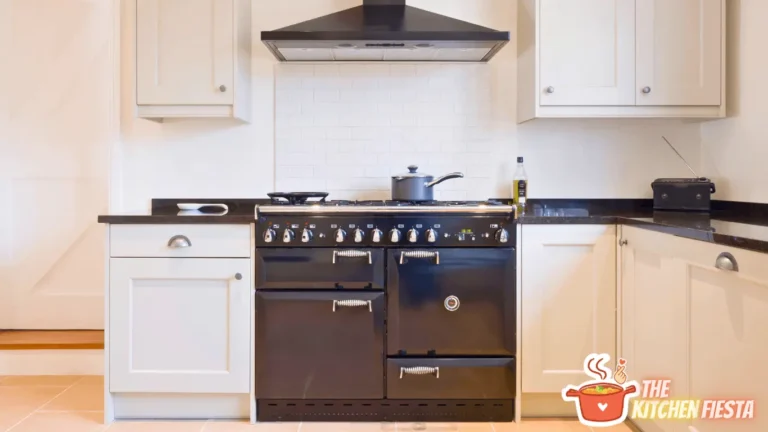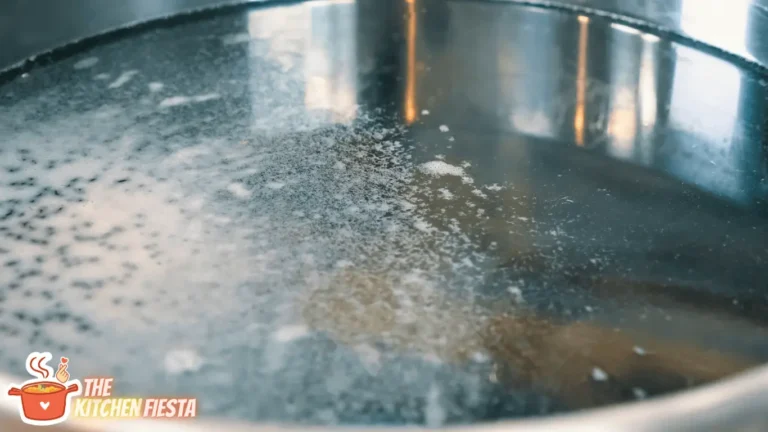Can You Use Non-Stick Pans on an Electric Stove?

If you’ve recently switched from a gas to electric stove, or are outfitting your kitchen with new cookware, you may be wondering: can I use my non-stick pans on an electric stove?
The short answer is yes, you can safely use non-stick pans on an electric coil, glass top, or induction stove. Non-stick pans are designed to distribute heat evenly and work on any modern stovetop surface.
However, there are some tips for caring for non-stick pans on an electric range to prevent scratches and maximize the life of the non-stick coating. Read on to learn more about using non-stick cookware on electric stoves.
How Do Non-Stick Pans Work?
Before jumping into using non-stick pans on an electric stove, let’s briefly go over what defines a non-stick pan. Non-stick pans, such as Teflon or ceramic-coated, have a coating on the cooking surface that prevents food from sticking. This allows cooking with little to no oil and makes cleanup much easier.
The non-stick coating is made from polytetrafluoroethylene (PTFE), a synthetic polymer applied in a thin layer to the pan. Brands like Calphalon and All-Clad use trademarked non-stick coatings like Greblon and PFOA-free Teflon Select. Ceramic non-stick coatings have grown in popularity in recent years as well.
The non-stick surface allows cooking eggs, pancakes, fish and more without food sticking or residue left behind. It also enables easier cleanup by preventing burnt on food. Just a soft sponge or cloth is needed to gently wipe away any leftover grease.
With the basics of how non-stick cookware works explained, let’s look at using it on modern electric stove tops.
Is It Safe to Use Non-Stick Pans on Electric Stoves?
Non-stick pans are designed to be compatible with all stovetop surfaces, including electric and induction ranges. The construction of non-stick pans allows them to safely heat up and distribute heat evenly on electric surfaces.
Electric coil and glass top stoves heat through conductivity, transferring heat directly to the pan bottom. Non-stick pans work safely on these electric surfaces since the heat passes through the entire pan, rather than expose any single spot to intense direct heat.
Electric stoves tend to heat cookware more evenly than gas. Gas burners apply direct intense heat that can lead to hot spots if pans don’t distribute heat well. This makes non-stick pans in some ways ideal for electric ranges, since the non-stick surface helps prevent uneven hot spots.
So you can confidently use any quality non-stick pans on an electric stove. Just be sure to follow some care tips outlined below to prevent damaging the non-stick coating when cooking on an electric range.
Tips for Using Non-Stick Pans on Electric Stoves
While non-stick pans are safe to use on electric ranges, there are some best practices to follow to make sure they last. Here are some tips for properly using non-stick cookware on coil, glass top, and induction electric stoves:
- Allow the pan to fully preheat on low to medium heat before adding food. Non-stick surfaces distribute heat more evenly when given time to fully heat up.
- Use oils with high smoke points like avocado, grapeseed, or canola oil. Avoid butter, olive oil, and other fats that can burn or smoke at standard cooking temperatures.
- Never use metal utensils or abrasive scouring pads on non-stick, as they can quickly scratch the surface. Opt for wood, silicone or firm plastic utensils.
- Avoid using cooking spray, as it can leave a sticky residue that burns onto the non-stick surface at high heat. Wipe any oil in the pan thoroughly with a paper towel.
- Don’t cut foods directly in the non-stick pan with sharp knives. This can slice through the non-stick coating. Use a cutting board for prep.
- Allow pans to completely cool before washing to prevent warping. Avoid abrupt temperature changes.
- Hand wash non-stick pans with mild dish soap and soft sponge. The dishwasher can gradually deteriorate the non-stick over time.
Following these tips will maximize the life span of your non-stick cookware on an electric range. Taking care not to overheat or use abrasive tools will maintain the non-stick surface.
How to Prevent Scratching and Damage to Non-Stick Pans?
In addition to the care tips above, there are some habits to avoid when using non-stick pans on an electric stove. Certain practices can damage the coating, reducing the non-stick properties.
Here are some things to avoid to prevent scratching and degrading your non-stick pans:
- Never use metal utensils like metal spatulas or whisks, as they will scratch the coating. Opt for wood, plastic, or silicone.
- Avoid stacking items or nesting pans inside one another. This can scratch and chip the surface.
- Don’t cut foods directly in the pan. Use a cutting board for food prep, then transfer ingredients to the pan.
- Avoid cooking at extremely high temperatures. While non-stick pans are generally oven safe to 400-500°F, excessive heat can degrade the coating faster.
- Don’t preheat empty non-stick pans. Food helps regulate the temperature. Heating an empty non-stick pan can overheat the surface.
- Don’t use abrasive scouring pads or abrasive cleaners. Use a soft sponge or cloth with mild dish soap instead.
- Check for signs of wear like scratches or chipping, and replace pans once the non-stick degrades. The coating wears out over time.
Following these precautionary measures will keep your non-stick cookware in the best condition possible when cooking on an electric range.
What to Look for When Buying Non-Stick Pans?
If you’re in the market for new non-stick pans to use with your electric stove, look for these features:
1. High Quality Non-Stick Coatings
Look for names like CeramiGuard, Greblon, or Titanium Reinforced Teflon. These indicate thicker, more durable coatings that hold up better over time and frequent use.
2. Aluminum or Stainless Steel Bases
Aluminum heats quickly and evenly, while stainless steel is more durable. Thicker-gauge metals also prevent warping.
3. Riveted Handles
Riveted stainless steel handles withstand higher oven temps and help hands stay cool while cooking on the stovetop.
4. Oven-Safe at High Temps
Ensure pans are oven-safe to at least 400°F, ideal up to 500°F. This allows finishing cooking items that need to bake after stovetop searing.
5. Vented Lids
Lids with steam vents or glass tops allow monitoring food without removing the lid. This prevents escaping heat and moisture.
Here are some top-rated non-stick pans designed to perform well on electric ranges:
- Cuisinart Multiclad Pro Nonstick Cookware Set
- GREENLIFE CW0004970 Soft Grip Absolutely Toxin-Free Cookware Set
- T-fal Ultimate Hard Anodized Nonstick Cookware Set
- All-Clad HA1 Hard Anodized Nonstick Cookware Set
- Calphalon Premier Space Saving Nonstick 10 Piece Cookware Set
These feature durable non-stick coatings, even-heating aluminum construction, stay-cool handles, and higher oven-safe temperatures perfect for electric stoves.
Other Questions About Non-Stick Pans on Electric Stoves
Here are answers to some common questions about using non-stick pans on electric ranges:
Is it safe to use non-stick pans on electric glass top stoves?
Yes, non-stick pans work safely on smooth glass top electric stoves. The flat surface allows the pan to fully contact the range for even heating. Avoid dragging pans which can scratch the glass.
What temperature can you use non-stick pans on electric stoves?
Use low to medium heat, avoiding temperatures over 400°F to prevent degradation of the non-stick coating. Always preheat pans at a lower temp first.
Do you need special pans for induction electric stoves?
Induction stoves require cookware with a magnetic base, like stainless steel or cast iron. Not all non-stick pans work, so check if they are induction compatible.
Should you replace non-stick pans every few years?
The non-stick coating will gradually wear out over time. Every 2-3 years is a good benchmark for replacing heavily used pans with fresh non-stick.
Can you put non-stick pans in the oven?
Yes, quality non-stick pans are oven-safe to 400-500°F. Avoid broiler heat which is too intense. Slowly heating up pans prevents warping.
Can you use non-stick pots or dutch ovens?
Yes, you can purchase stock pots, sauce pots, and dutch ovens with non-stick interiors. This prevents sticking with dishes like rice, soup, chili, and braised meats.
Should you seasoning non-stick pans?
Seasoning is not necessary or beneficial for non-stick pans. The coating already prevents sticking. Avoid oil seasoning methods which can burn on and upset the non-stick properties.
Key Takeaways on Using Non-Stick Pans on Electric Stoves
Non-stick pans are designed to safely perform on all stove types, including electric. Here are the key tips to remember:
- Allow pans to fully preheat before adding food to prevent uneven hot spots.
- Use oils with high smoke points and avoid overheating empty pans.
- Prevent scratches by using wood, silicone or plastic utensils.
- Hand wash with mild soap and don’t use scouring pads.
- Look for high quality non-stick coatings and aluminum bases for even heating.
With proper care, your non-stick pans can deliver convenience and easy cleanup during everyday cooking on an electric range. Follow these tips for maximizing the life span of the non-stick coating.






